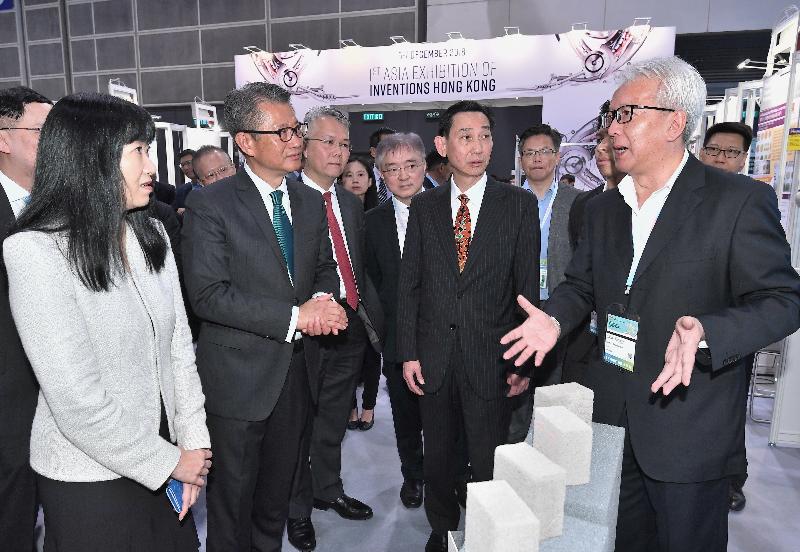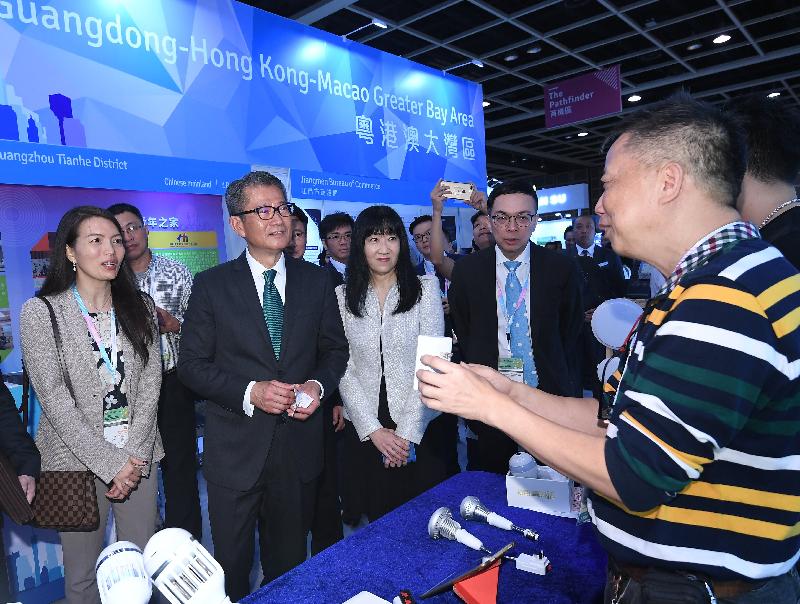Following is a question by the Hon Jeremy Tam and a written reply by the Secretary for the Environment, Mr Wong Kam-sing, in the Legislative Council today (December 5):
Question:
On September 21 this year, the Environmental Protection Department set up a temporary wood waste collection area (the collection area) in the Kai Tak Development Area for collecting and temporary storing the huge quantity of tree waste generated due to the onslaught of super typhoon Mangkhut in Hong Kong. The collection area stopped receiving tree waste on the 10th of last month. Besides, it is learnt that quite a large quantity of yard waste is generated in Hong Kong each year. In this connection, will the Government inform this Council:
(1) of the quantity in tonnes of tree waste collected in the collection area during the period of its operation; a breakdown of that quantity of waste by disposal method, as at the 30th of last month;
(2) of the respective quantities of yard waste (i) collected and (ii) discarded at landfills, by the various government departments in each year from January 2014 to the 30th of last month;
(3) whether it has studied those yard waste disposal methods which are, as compared with disposal at landfills, more environmentally friendly feasible and effective; if so, of the details; if not, the reasons for that; and
(4) of the latest implementation progress of the various measures to reduce yard waste at source, which were put forward in A Food Waste and Yard Waste Plan for Hong Kong 2014-2022, and the effectiveness of such measures?
Reply:
President,
(1) Super typhoon Mangkhut caused extensive and severe damage to Hong Kong, resulting in a huge amount of broken or fallen trees and hence a surge in the volume of tree waste. The Government had to respond swiftly with a view to clearing up the tree waste as quickly as possible. To facilitate and expedite the clearance work conducted across the territory, the Government set up a temporary collection area (the collection area) in the Kai Tak Development Area for temporary stockpiling of fallen trees and branches collected and delivered by the public. From September 21 to November 10, the collection area received a total of around 8 200 truckloads of tree waste. The Government was well aware beforehand that such waste would require prompt treatment or else might cause environmental hygiene nuisance including mosquito breeding. The Environmental Protection Department (EPD) thus started to collaborate with the departments concerned from September 28 in delivering tree waste at the collection area to appropriate facilities for treatment or disposal. The delivery exercise was completed on November 27, with about 20 480 tonnes of tree waste delivered to the West New Territories Landfill for disposal.
To encourage waste reduction and reuse as well as recycling of resources, the collection area was open to the public between September 22 and October 31 for free collection of logs from the tree waste. A total of 435 logs were collected by 85 groups or members of the public. The EPD also selected some 450 logs suitable for reuse from the tree waste in the collection area and delivered them to the Community Green Stations (CGSs) in the Eastern District, Kwun Tong, Sham Shui Po, Sha Tin, Yuen Long, Tuen Mun and Kwai Tsing, with the aim of encouraging interested parties or members of the public to reuse or recycle the logs. Members of the public may visit these CGSs by December 31 to obtain the logs for free, and may call the CGSs to enquire about necessary arrangements and make appointments in advance. As of November 27, a total of 225 logs were collected from these CGSs by interested parties/individuals.
In addition, to speed up the handling of the large amount of tree waste generated during the attack of super typhoon Mangkhut and facilitate onward recycling, the EPD has procured an industrial grade wood shredder, which is placed on the government land near the T·PARK in Tuen Mun. Some 2 300 tonnes of the tree waste temporarily stored at the collection area have been delivered to the above land area, where the contractor engaged is conducting installation and testing of the machinery concerned. Separation of other types of waste from the mixed tree waste is also underway to prepare for shredding and recycling of the tree waste.
(2) The quantities of yard waste collected and disposed of by various Government departments in the past few years are detailed at the Annex.
(3) The EPD has been exploring different proposals to utilise yard waste resource effectively as far as practicable, with various feasible treatment trials in progress. As mentioned in the response to item (1), the EPD has procured an industrial grade wood shredder. Tree waste is just being shredded, and trials are being started to turn the shredded wood into wooden chips for various uses, such as solid fuel for appropriate facilities, bulking agent in the composting process at the Organic Resources Recovery Centre, mulch for planting purposes, and soil cover at landfills, etc. Moreover, the shredded wood is available to interested parties or members of the public free of charge for suitable recycling uses. In the long run, the EPD will introduce more diverse proposals for treating yard waste. Subject to the outcome of the above trials, the EPD will consider incorporating these proposals in our long-term strategies on yard waste management.
(4) In February 2014, the Environment Bureau (ENB) promulgated A Food Waste and Yard Waste Plan for Hong Kong 2014-2022 (the Plan), which sets out the Government’s strategies on dealing with organic waste. The strategies cover collecting data, promoting waste reduction at source, encouraging waste separation and collection as well as exploring the most suitable means to treat the unavoidable waste. An interdepartmental working group led by the ENB also convened meetings to co-ordinate the work of various Government departments in implementing the Plan, including enhancing data collection and promoting best practices.
Various government bureaux and departments have rendered support to the Plan. For example, the Greening, Landscape and Tree Management Section of the Development Bureau published the Guidelines on Yard Waste Reduction and Treatment in July 2014 for general reference by Government departments regarding measures on yard waste reduction at various stages from landscape design to maintenance. The Agriculture, Fisheries and Conservation Department treats yard waste on site as far as possible, including stockpiling on site to provide niches for wildlife and release nutrients to the nature as the waste decomposes. Suitable tree logs are reused for making furniture or decorative items for the recreational facilities in country parks, such as animated features, waymarks and benches, etc. Yard waste from the Leisure and Cultural Services Department (LCSD) is delivered to the Animal Waste Composting Plant in Ngau Tam Mei for composting. Since 2014, the LCSD has started to produce compost on-site from yard waste using garden composters at suitable venues. The LCSD is also replacing the planting of annuals by shrubs or perennials with colourful foliage, with a view to reducing yard waste at source. In the longer term, the LCSD will specify in the Schedule of Accommodation of suitable new venues the requirement for installation of on-site composting facilities. The Civil Engineering and Development Department’s greening works relating to infrastructural development, geotechnical works and greening master plan will focus on planting of perennials suitable for local environment, with the right vegetation in the right place and choose native perennials to encourage local ecological growth and reduce plant replacement in order to reduce yard waste. The Government will continue to implement the Plan in full to reduce yard waste on multiple fronts, including reducing the use of decorative plants during festive events, replanting, promoting better landscape design, etc. read more





